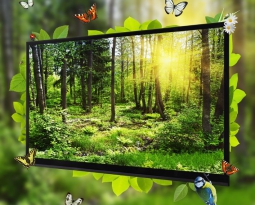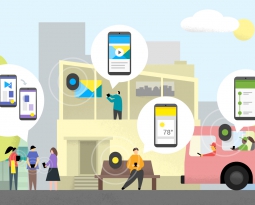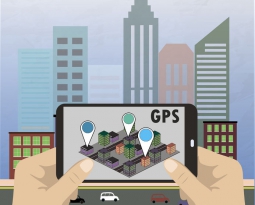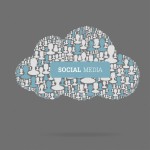Beacons help capture a demographic that is fond of soaking in store window displays without actually venturing inside the store. With beacon technology, passers-by can receive more information about the products on display or offers related to them. This functionality gets people excited about the idea of a purchase, changing them from dreamers to doers when it comes to bringing home the products they were gazing at moments before.
A Storied Tradition of Window Shopping
In 1852, a visionary Frenchman named Aristide Boucicaut invented the idea of a department store, opening his Le Bon Marché in Paris that year. Among his innovations was the idea of selling a large variety of goods in a large âindoor marketâ type building â a âtown within a town,â in his own words.
To get the point across that consumers could enter the building and buy any number of fabulous household goods, Boucicaut used enormous and expensive plate glass windows displaying an attractive diorama of some of the most desirable products currently on sale. The idea caught on with other large retailers, and by 1872 Bloomingdaleâs, Macyâs and Marshall Fieldâs all had built opulent department stores with lavish window displays.
People walking down the street on their way to work, attend a show or venturing home would see the fabulous displays and be enchanted by them. Many would be drawn into the store to ask about the items, but others would simply linger. After a while, âwindow shoppingâ became a pastime of its own, where people would take in the alluring window displays without any intention of entering the store. The displays had become effective at attracting people, but not always converting them into customers.
How Beacons Create a New Narrative of Action-Prone Customers
The truth is that window displays have become a potential victim of âart for artâs sake.â Giorgio Armani, Salvador Dali, Andy Warhol and Fleetwood Mac singer Christine McVie were all at one time window dressers. L. Frank Baum, beloved childrenâs writer of the Wizard of Oz book series, even once wrote an entire book on the subject matter. The fanciful displays fit well with his imaginative sensibilities, enabling him to create a fantastic world within the space between the divider and the window glass.
Beacons can transform these imaginary realities into actuality within the customerâs mind. They can convert their impulse to marvel at the tableaus into sales actions by using beacon-enabled retail platforms. A window shopper can find out how much the products cost, what their features are and how they fit within any emotional or value-focused brand campaigns. Beacons can also let customers know about offers related to the window displays, motivating them to take action before the offers expire. This type of customer conversion helps brands who are working on building retail traffic.
From the retailerâs standpoint, customersâ interactions with the beacons can yield incredible insights as to how window displays affect shopping behavior. The retailer can learn which displays attract the most attention or which objects are considered most desirable within a window display based on how the customer navigates the beacon-enabled app. Over time, expect window displays to become more and more effective at generating sales instead of merely looking pretty as a direct result of these informative data sources.
Find out more about how beacons can enhance the powerful seduction of visual merchandising, and also learn how simple data-driven decision making can be through Digital Social Retailâs robust digital convergence platform. Our software product makes it simple to manage all customer touch points â from digital marketing to social media to beacon offers â all from one cloud-based platform. Visit our product page to discover more.










